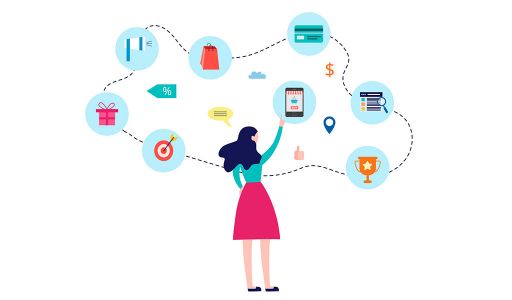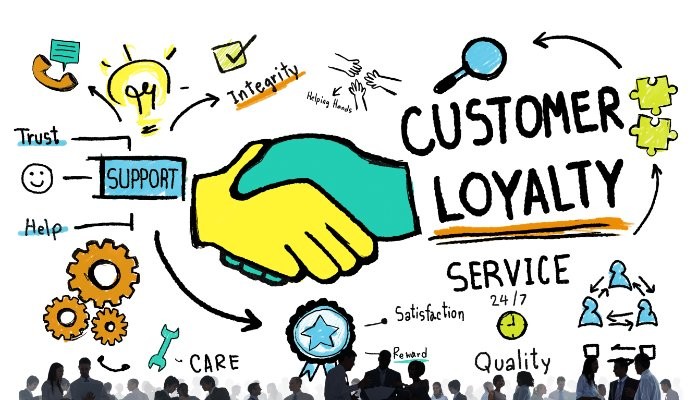
#1: Understand Where Your Customers Are
The worst thing you can do when trying to entice customers to buy your product, is to unintentionally turn them off with your sales approach. With that in mind, it is key to understand at which part of the process your customers are at so as to apply the appropriate sales tactics. Every sales funnel, no matter the amount of processes, can generally be divided into three sections:
- firstly, the Awareness & Discovery phase where customers are made aware of your product or service for the first time
- secondly, the Interest & Engagement phase where customers show genuine interest in how your product or service can help them solve their problem
- lastly, the Decision & Purchase phase where the customer has a good understanding of how your product can help them, and are ready to finalize the purchase
When broken down into phases, you get a better of idea of how to employ your sales approach. Additionally, it should also be made clear on how to not approach customers at a specific stage.
#2: Apply The Right Tactics
Now that you’ve understood the phases of the sales funnel, you might be wondering – how should I approach each phase? In actual implementation, phases of the sales funnel can be extremely intricate and complex – due to the varying business and customers’ needs. We’ll be sharing a few general yet scalable guidelines on how to approach each phase – these guidelines can be expanded on to suit your business requirements!
1. Awareness & Discovery
Widely regarded as the most important yet hands-off phase, this is where potential customers get to know your product for the first time and are briefly introduced to it. This phase is more being welcoming and approachable- whilst also subtly sharing your company’s ideas, solutions and ethos. All of this can be accomplished by presenting informative yet interesting content such as posters, infographics, videos and social media posts. At no point in this phase do you want to push your product, it may come off as overbearing and even hard selling – which can completely turn your potential customers away!
2. Interest & Engagement
At this point, the customer is genuinely interested in your product and wants to know how it can address their problems and pain points. This is where you want to start to directly market your product and familiarize your customer with your offerings. A great way to do this is to introduce free trials, this allows customers to get a feel of your product and service on a much more personal level. While not as effective, informational videos and brand awareness campaigns can also help potential customers understand how they can benefit from your product.
3. Decision & Purchase
You’re almost there! The customer is now convinced and ready to make the purchase, now they’re just looking for that something extra that pushes them over the line. As you know, nothing speaks to customers like a raving review, demonstrational videos or a way for them to save money! You can address these desires by including testimonials, case studies, reviews, product videos, discount codes and even a referral program! While it may seem tedious and unbeneficial at first, these extra points can more often than not help you seal the deal!
Elephant In The Room: Uninterested Customers
It happens. You spend countless hours planning, testing and refining your sales funnel only to lose dozens of leads due to loss of interest. However, you’ll be pleased to know that not all these leads are lost – with the help of remarketing! Have you ever wondered why you started seeing ads for a product you’re interested in despite searching for it weeks ago? That in a nutshell, is remarketing – although only made known less than ten years ago, it is an essential part of any sales funnel. Remarketing works by using cookies – say for example a customer glances through your website before exiting, a cookie containing that encounter is then stored, which can then be used via ads on another website to direct the customer back to you! However, as Moz points out, remarketing should be done to a maximum of five to six times, otherwise it becomes annoying to the prospect.
If you are running a social media marketing campaign to generate leads, you will definitely need to remarket your audiences.
#3: Purchasing – No Longer The Final Step
So if your prospect decides to convert and purchase – congratulations! What’s next?
Despite what many might think, the purchase step doesn’t mark the end of the sales funnel for your customer. Even after purchase, there is still room to grow brand loyalty and upsell your converted customer to more products and services of your brand. So what is brand loyalty?
Love it or hate it, brand loyalty is the best thing for any brand out there. Think about the legion of Apple, Starbucks and Nike fans you see all over the internet and out on the street. When you continually engage with customers you’ve had positive experiences with, you can form a sense of identity and community amongst these people. And not only are they more inclined to make additional purchases – they have the potential to market your product more effectively that any marketing campaign you can come up with. Now you’re surely wondering just how to foster brand loyalty within your customer base – not to worry, we’ve prepared a list of post-purchase ideas to re-engage customers!
- Community Feedback – physical or digital, no matter your product, you are bound to go through different iterations throughout the years as improvements are made. An excellent way to not only receive valuable feedback and suggestions from the very people that use your product, it can also serve as a way for customers to feel more involved with your product by providing their thoughts and criticism.
- Loyalty Points – a great way to keep customers coming back for more, a loyalty program provides an incentive that requires little to no maintenance – unlike others way such as a new menu, promotions, etc. Also, giving your customer the freedom to redeem products at their choice gives them empowerment.
- Rewards, discounts and offers- Ever gotten green with envy at a friend who has that 20% off from being a member at a beauty store, or a free birthday drink for members at bubble tea chains? This is a way brands reward post-purchase customers to keep coming back to their brand. And if customers already have a positive impression of your brand, this is a great way to deepen that connection.
Conclusion
Creating an effective sales funnel can be hard, and countless hours can be spent on research, planning and testing. However, the most important aspect would be to definitely identify which stage of the funnel your prospect is at, and applying the right tactic to entice or attract them.
If you are a business owner and interested in growing your brand through digital marketing, FirstCom Solutions is always ready to help you not only identify how you should be targeting your customers, but also what kind of ecommerce web development you need. Contact us today!




